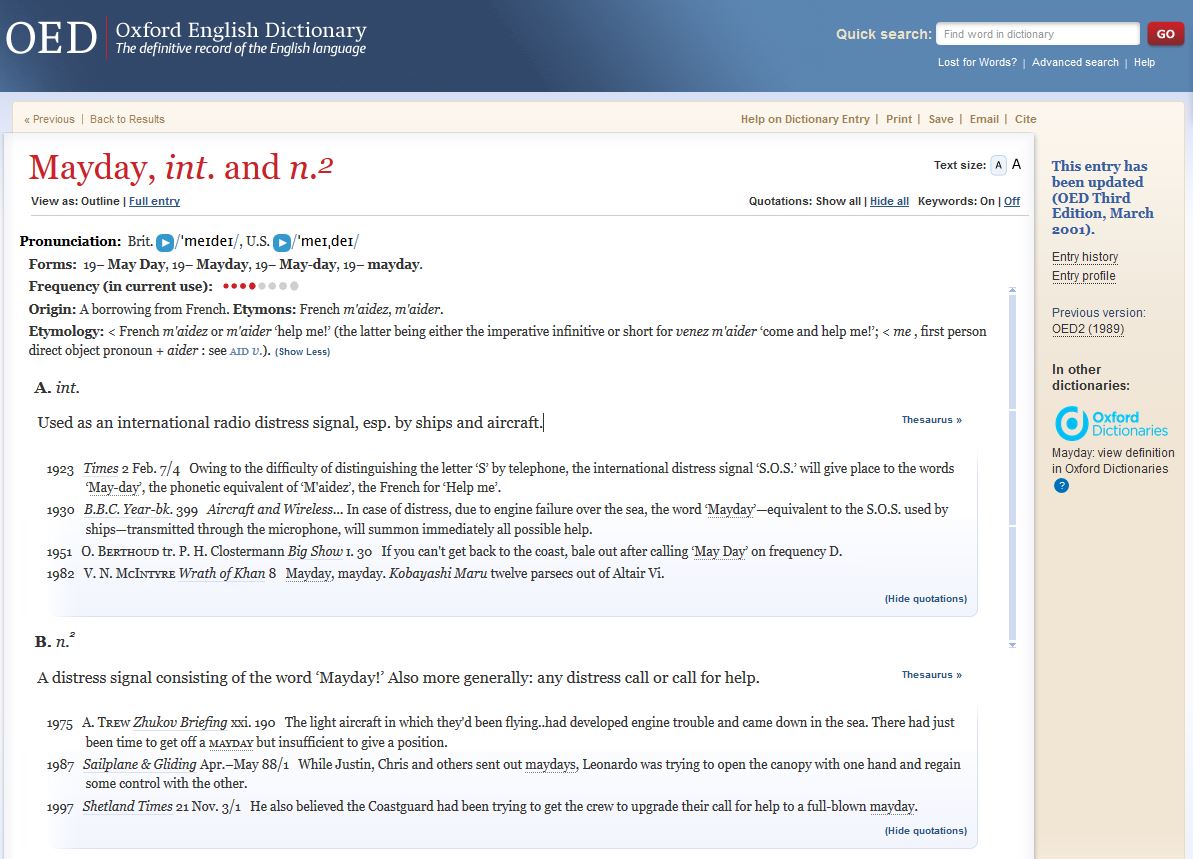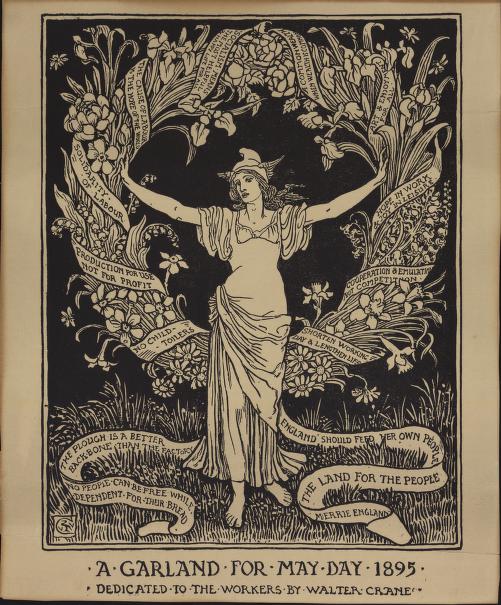MayDay on May Day

Image via Steve Ammidown
Each year the Society of American Archivists (SAA) sponsors MayDay on May 1, a day dedicated to disaster preparedness and response. MayDay is intended to be “a time when archivists and other cultural heritage professionals take personal and professional responsibility for doing something simple—something that can be accomplished in a day but that can have a significant impact on an individual’s or a repository’s ability to respond.”
On MayDay, archivists are encouraged to update and review emergency response plans for archives (for example, what’s the plan if you walk into the stacks and find mildew everywhere?) or inventorying disaster response supply boxes (which would include various things to help with a water leak), and a number of other ideas.
Of course Mayday is a distress signal that traces its lineage as a reference to the French m’aidez or m’aider ‘help me!’, and it is this reference that SAA is primarily alluding to. The Oxford English Dictionary traces “Mayday” to the 1920s:

For those of us who identify as comrades, May Day (without the space) on May 1 has long had a very particular meaning. May Day is also known as International Workers Day, and traces its origins to an important event in labor history, the Haymarket Tragedy, which took place only 2 miles from the current headquarters of the Society of American Archivists.
According to the Encyclopedia of Chicago:
On May 1, 1886, Chicago unionists, reformers, socialists, anarchists, and ordinary workers combined to make the city the center of the national movement for an eight-hour day. Between April 25 and May 4, workers attended scores of meetings and paraded through the streets at least 19 times. On Saturday, May 1, 35,000 workers walked off their jobs. Tens of thousands more, both skilled and unskilled, joined them on May 3 and 4. Crowds traveled from workplace to workplace urging fellow workers to strike. Many now adopted the radical demand of eight hours’ work for ten hours’ pay. Police clashed with strikers at least a dozen times, three with shootings.
Since Haymarket, May Day has become an international day of remembrance to honor the labor movement’s sacrifices on behalf of workers. It was widely observed within the United States until the Red Scares.
Inspired by the American movement for a shorter workday, socialists and unionists around the world began celebrating May 1, or “May Day,” as an international workers’ holiday. In the twentieth century, the Soviet Union and other Communist countries officially adopted it. The Haymarket tragedy is remembered throughout the world in speeches, murals, and monuments. American observance was strongest in the decade before World War I. During the Cold War, many Americans saw May Day as a Communist holiday, and President Eisenhower proclaimed May 1 as “Loyalty Day” in 1955. Interest in Haymarket revived somewhat in the 1980s.
So how come on MayDay (the SAA version), archivists rarely, if ever, also acknowledge the other May Day (the one that’s been around for over a century)?

A Garland for May Day 1895, by Walter Crane. Crane was an English artist who was sympathetic to the Haymarket defendants. Image via the University of Michigan Labadie Collection.
My friend and archivist colleague Steve Ammidown made the image at the top of this post, and it basically says it all. To effectively respond to archival disasters, archives have to have adequate staffing of professional archivists. A disaster plan is only as good as the people and resources available to put it into action. As someone who has been writing a lot about both labor and climate change issues within our profession, I completely agree with Steve’s assessment that disaster preparation and emergency response cannot be separated from the larger labor and staffing issues that haunt our repositories.
Indeed, this is a point that I and my colleagues studying climate change risks to archives have been trying to get across: that like other vulnerable populations, the archives most likely to suffer from the effects of climate change are the ones that are least able to deal with normal operating conditions because of their staffing inadequacies.
So by all means, archivists – do your part for MayDay. But until we deal with the long-term labor issues articulated by workers each May Day since the late 1800s, anything else is a band-aid on top of a gaping wound.
(Thanks to Steve for letting me use this image and inspiring this post!)
Categorised as: Uncategorized